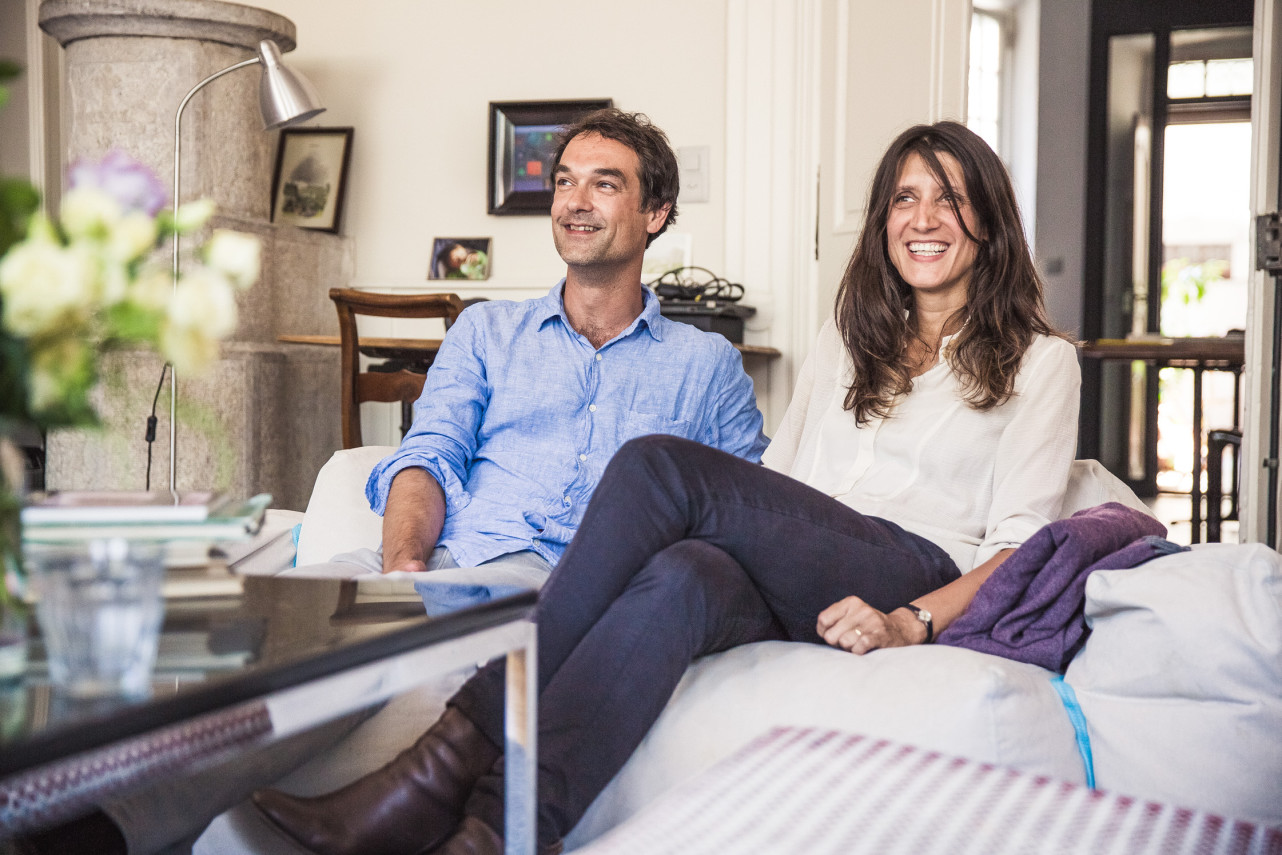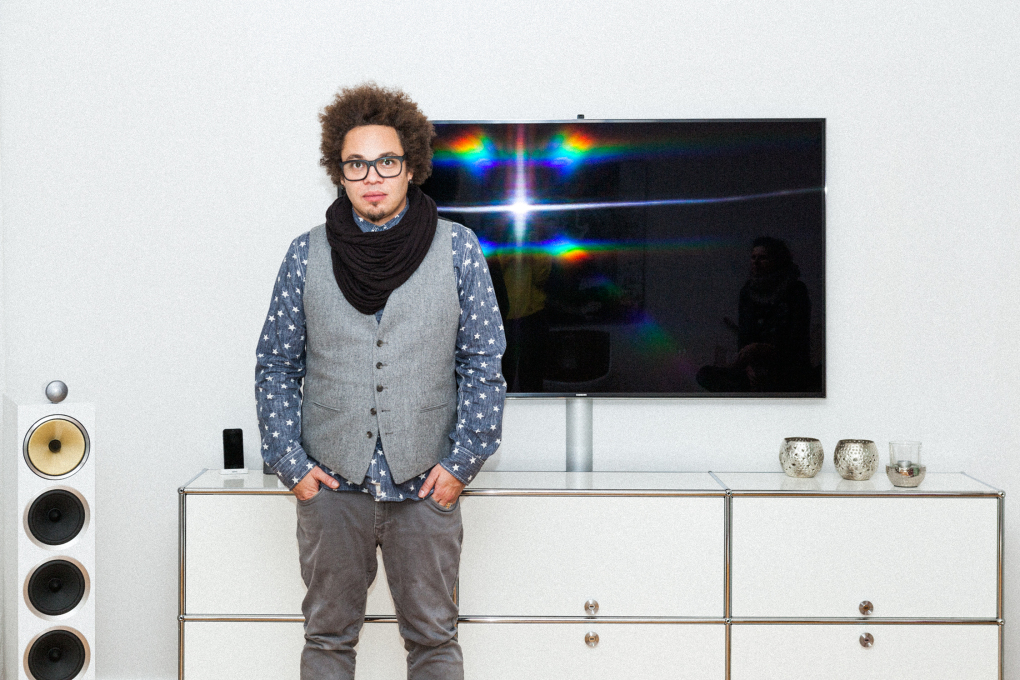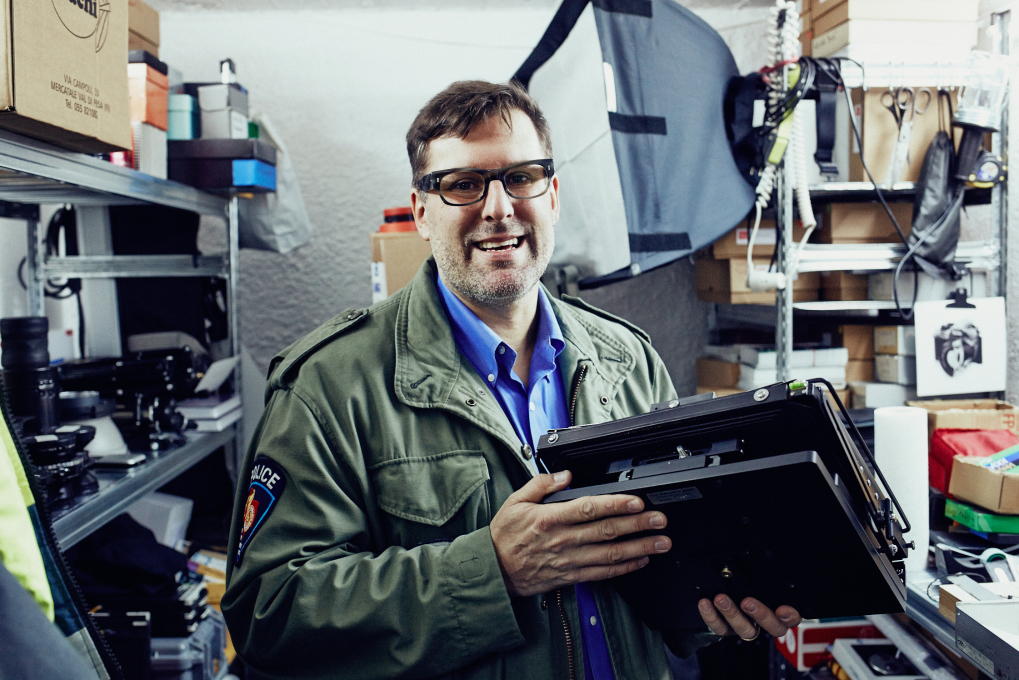Catherine Gay Menzel and Götz Menzel
Architects
8. October 2015
Saint-Maurice, Valais
Catherine Gay and Götz Menzel run the architecture firm GayMenzel in the Valais municipality of Monthey, Switzerland. The Hamburg native and the Lower Valais resident met during their studies in Lausanne 17 years ago; after that, they lived in New York, Basel and Hamburg. In 2009, they moved with their two children to the small medieval town of Saint-Maurice to found their joint firm. And two years ago, a longtime dream finally became reality when the family moved into an apartment behind monastic walls.





In your office space, you still have some USM Haller furniture that Catherine’s father bought. Was it clear to you that you would take it on?
Catherine: Yes, absolutely. It shows how timeless USM is. There really are genius ideas within this system environment. In the front office area, for example, two tabletops are joined at a right angle to ensure the most possible legroom. We kept all tables, corpuses and sideboards by USM, and even bought two more tables. These black pieces are as suitable for our young firm as they were for my father.

“These black pieces are as suitable for our young firm as they were for my father.”



Götz, you are originally from Hamburg. Do you consider USM a Swiss brand?
Götz: Yes, definitely. In my mind, the name alone stands for the absolutely dependable Swiss-quality mentality. In addition, the furniture pieces still emanate the optimism of the '60s that ruled before the Club of Rome and the oil crisis. Related to it is the vision of a modular world as conjured by the inventor Fritz Haller.



You have worked in a variety of different firms and countries. From which of these experiences do you benefit the most today?
Catherine: I took away a lot about self-sufficiency, particularly from the small firms. In New York, there were only four of us and we did everything ourselves, from buying paper to answering the phone.
Götz: Herzog & de Meuron was like a second education for me. The immense intellectual freedom and the openness to unorthodox designs that I encountered there were exceptional.
How do you experience architecture in a region as peripheral as Valais?
Catherine: It varies. On the one hand, it is disappointing to see how much big investors are building as cheaply as possible. On the other hand, there is a great dynamic between architects – we know each other even across generations.
Part of it is that we often enter the same competitions. In Switzerland, any public construction project over a million francs – or with a royalty of at least 150,000 francs – must be tendered publicly. This is a very good system for our industry.




How would you describe your interior style?
Götz: We like to mix different styles, but our favorites are mostly from the postwar period. I prefer elegant design that isn’t too conceptual. I really like our wooden side table, which was a gift from neighbors. The long, slender legs give it character.
Catherine: We are rather careful when it comes to new furniture. It is important for an interior design to expand coherently and be able to grow continuously. This takes time. We have wanted a new lamp for the living room for five years but we are just not finding one that we like.
Götz: I painted the bookshelves from the hardware store myself: the movers laughed when we wanted to take them with us, but I am attached to them. The carpet in the living room is so-called display ware, cut for us directly from the roll. We acquired the sofa with the individual seating elements and the detachable table from USM for the apartment in Basel, which had three floors and a small spiral staircase on which we had to transport everything.



When it comes to furniture selection, is versatility important to the two of you?
Götz: Absolutely. Here in Saint-Maurice, the USM Haller table mostly serves as our dining table, but the kids often do crafts on it, too. More than once, I have had to clean up watercolors or scrape away glue residue.
Catherine: I inherited that table from my father. He was a big fan of USM. He started furnishing his architecture firm with black USM furniture in the '70s and '80s – and later, his private spaces as well. For him, USM was the ultimate. Back then, it was regarded as quite avant-garde.


The multicolored rectangles on the sideboard remind one of Donald Judd’s minimalistic art.



You have a USM sideboard in your son’s room. Did you acquire it specifically for this purpose?
Götz: No, we had it in our living room in our small apartment in Hamburg, and it was filled with everything imaginable, from valuables to tools. The purchase decision was made rather quickly at the time. We didn’t want a colorless piece. The differently colored rectangles reminded us of the minimalist art by Donald Judd.
Now, it is one of our son’s favorite pieces. It is part of his playscape for Legos and cars. He often folds down the doors and uses the surface for play. In the beginning, we were worried that the kids might sit on it, but luckily, that hasn’t happened yet.





We would like to thank Catherine and Götz for allowing us to visit them in Valais and experience their hospitality. It doesn’t surprise us that their office’s newest project is reminiscent of Wes Anderson’s "Grand Budapest Hotel".
This portrait was produced by the international interview magazine Freunde von Freunden. Find more USM furniture for your home and workspace here.


